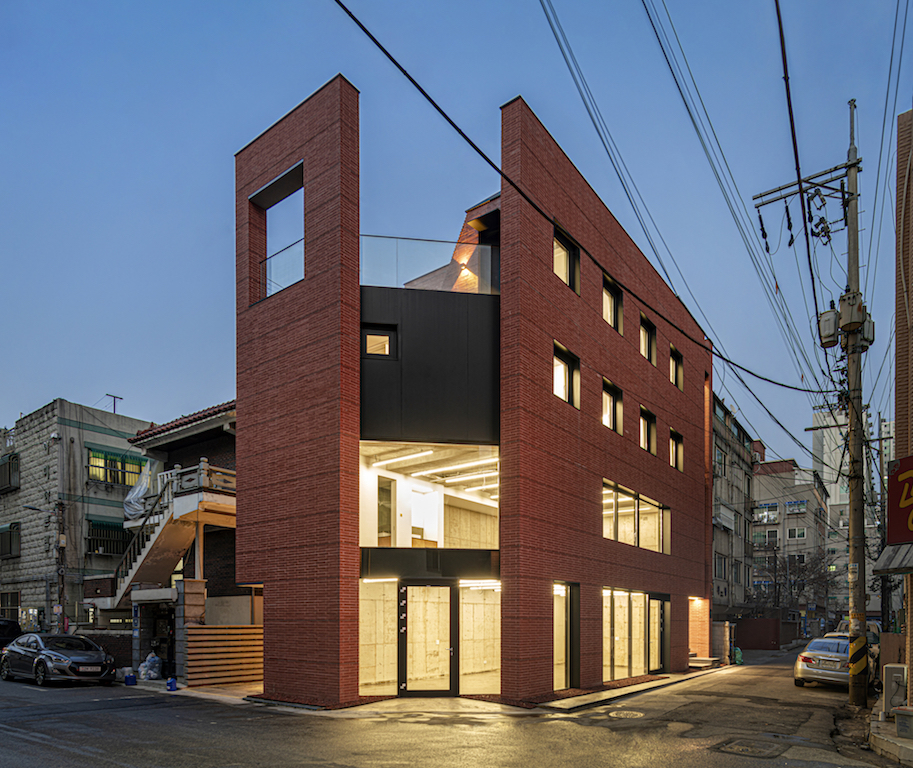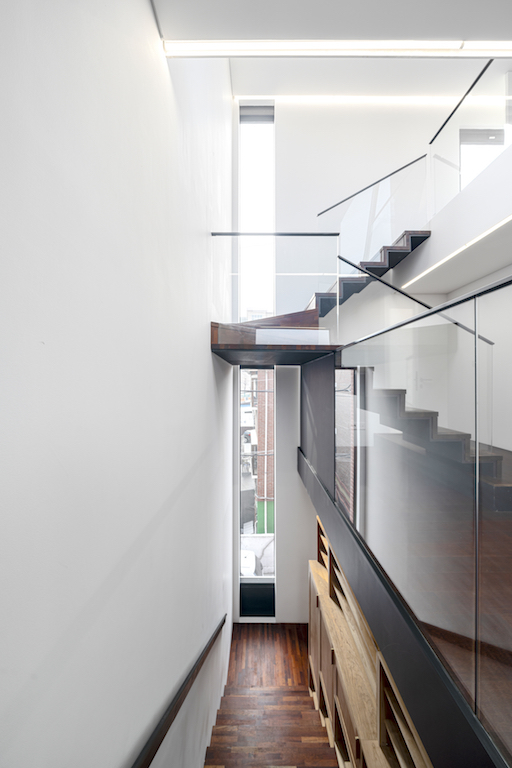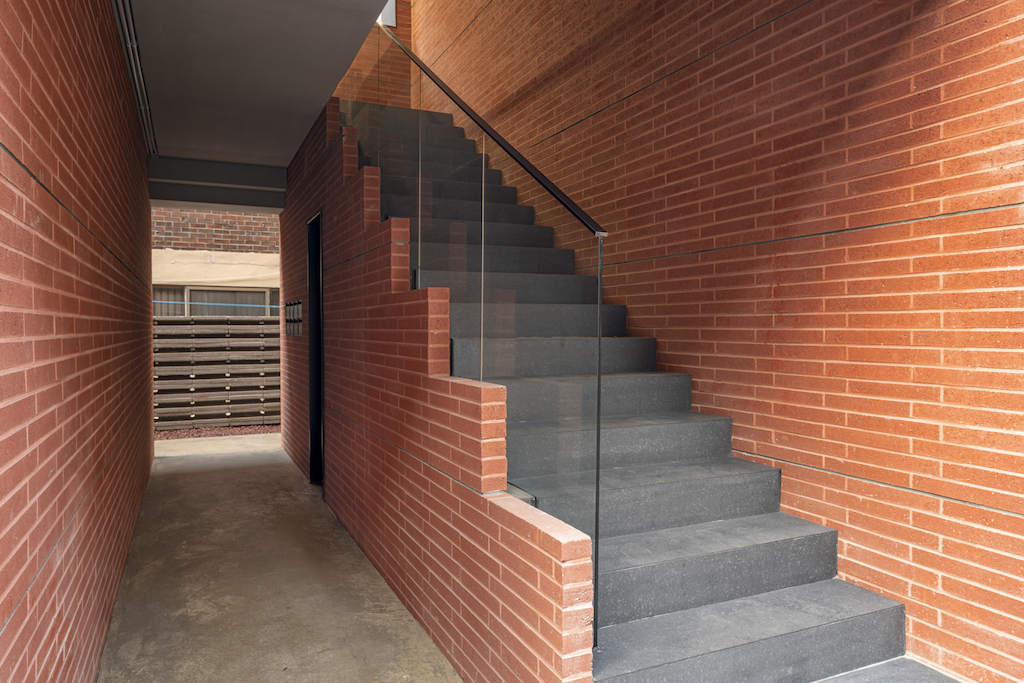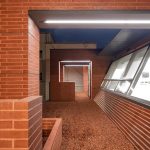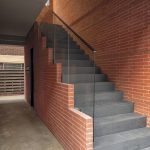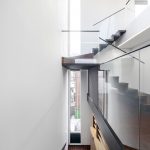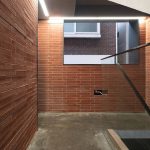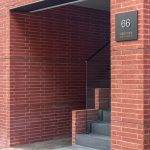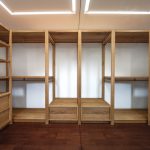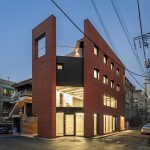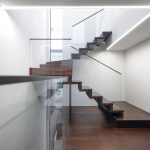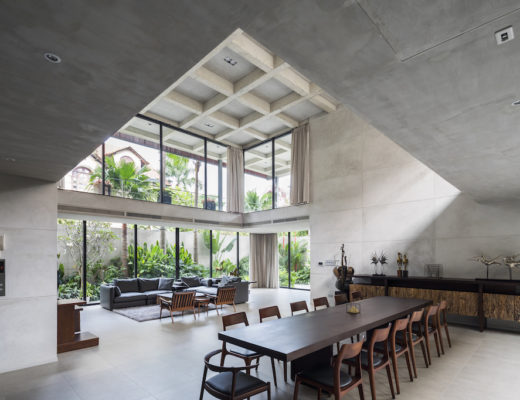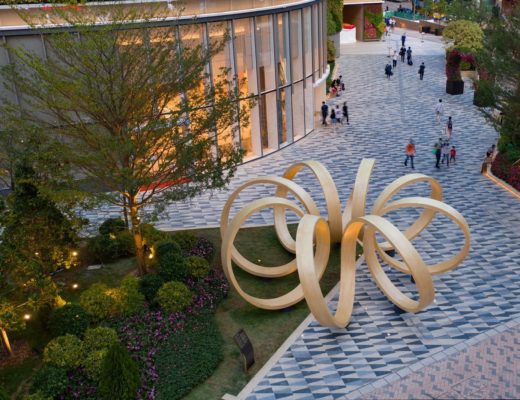South Korea has exacting codes and guidelines when it comes to building regulations in urban areas. This is especially so in the case of small buildings. As this 302m² plot of land in Incheon was cut off with corners of 18m X 8.4m, the size and shape of the building were determined under the highest priority of ensuring maximum floor area ratio and maximum building coverage ratio.
According to the building regulations, a three-storey building can be built on this site, but the surrounding buildings were five-storied that were built back in the 70s and 90s. The challenge that the architects faced was that if a small three-storey building were to be built here based on building regulations, the resulting building will stand independently, devoid of the context of its surroundings and the city.
The goal of this project was to consider the building regulations first to solve these problems. “The concept of ‘Three Planes and Five Layers’ allowed us t”o integrate the function, structure, and beauty of architecture,” explains Kyounjin Kim, the architect-in-charge. The three planes are responsible for both the form and structure of the building. Masses with three independent facades emphasise the main entrance of the building, the angular edge part is the main entrance of the commercial spaces, the two sides are highlighted by the two planes that protrude over the edge, and the exterior staircase leading to the second floor of the building highlights the two independent facades by creating an open space.”
As a result, these three exterior walls became the main structural parts of the building. Instead of using the column-beam structure system, these wall structure system was used which was not generally being used. The five horizontal layers are the result of a combination of function, structure, and aesthetics. The fourth floor’s mass follows the line of dedication which resulted in a slanted mass according to the building codes, and it provides unique and interesting massing.
You might also like:
Aoa architects designs house on compact site in Seoul with new typology of urban living
Also, the beams placed on top of the angular mass on the third floor of the building and the pillars create five layers. These layers provide a variation of the form, and it is used as a lighting installation for outdoor space as well as a passageway for the air-conditioning tubes and mechanical facilities. In addition, curtain walls were constructed for lighter weight and consumption of less material to help build a better structural system for an angled mass on the fourth floor.
The building that was created is in harmony with the environment of the city and naturally blends into surrounded buildings. The building has four levels, but the building’s three facades are extended out to five stories high which make the building as tall as the surrounded buildings and the red colour-concrete block blends in with existing brick buildings.
In addition, the facades and layers were reinterpreted and used as architectural design elements which include staircases and furniture. The exterior staircase was creating layers of spaces by using coloured concrete blocks, glass, and stepped staircase landing. The exterior wall has two different colours of mortar that match with red brick and dark gray. The red mortar tends to be invisible and dark gray mortar represents the process of the bricks being stacked.
See the full image gallery here:
Photos:GUUIJIN, Shammah Architects

